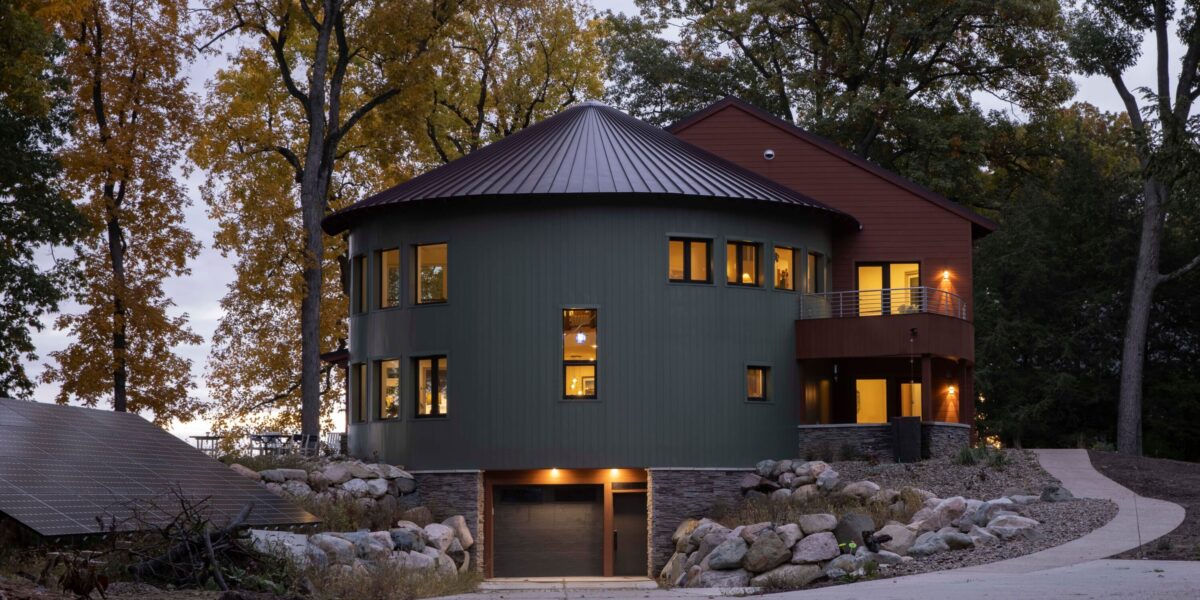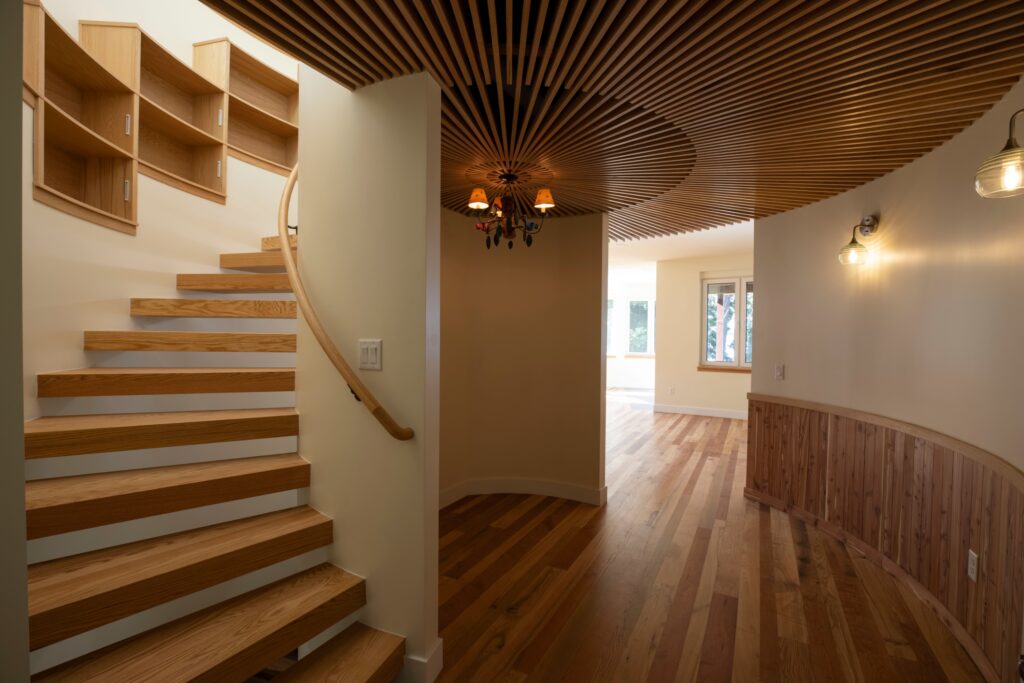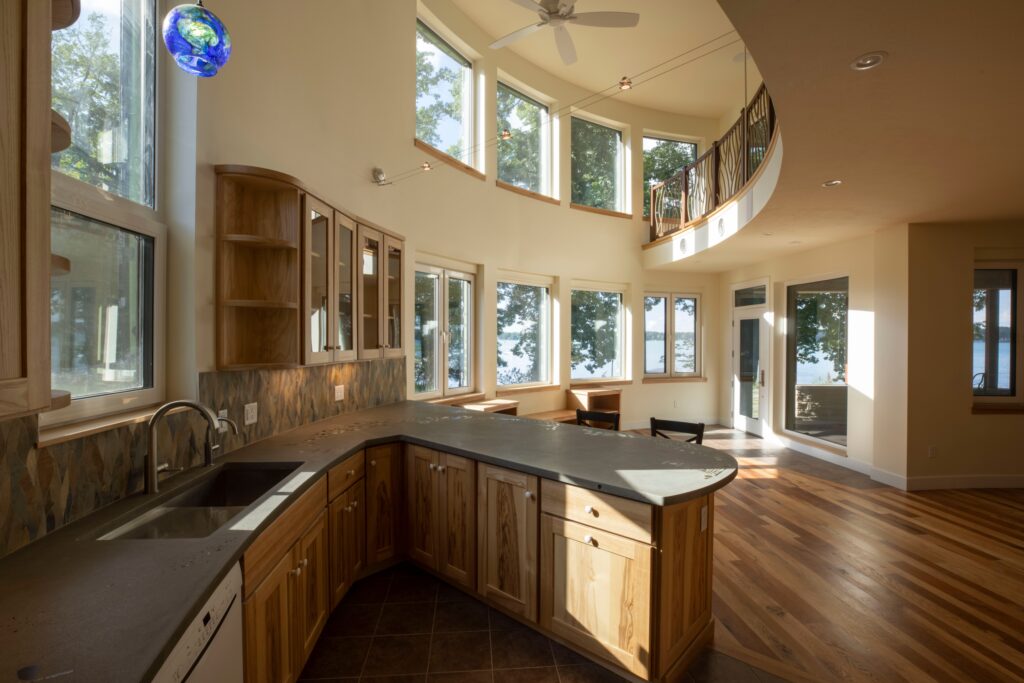
Those Passive Homes in ‘The Curse’ Are Very Real—Here’s What to Know About the Design Movement
The eco-friendly homes from ‘The Curse’ are not just real—they’re also a lot more practical than you might think.

Scott Shigley/Phius
Passive houses have recently entered the cultural conversation thanks to The Curse. In this 10-episode satirical series, Emma Stone and Nathan Fielder play newlyweds Whitney and Asher Siegel, who build passive homes in the town of Española, New Mexico for an HGTV show. This limited series from Showtime and A24 is a weird, wild ride (with an insane ending), but the energy-efficient houses featured in the series are real, and they’re a lot more practical and common than the show depicts.
Passive houses are essentially airtight, insulated buildings with high-quality ventilation, making them more energy-efficient, comfortable, and durable than typical housing. As Whitney puts it in The Curse, passive houses act like a thermos that can maintain its internal temperature with little energy input. This saves 40-60% on energy compared to typical homes, leading to far lower energy costs.
The concept of passive building originated in 1996 with the establishment of the Passive House Institute in Germany. This organization certifies the Siegels’ passive houses in The Curse, but the majority of passive projects in North America are actually certified by Phius, a Chicago-based nonprofit dedicated to making cost-optimized and climate-appropriate passive building the mainstream practice in the industry. Since its founding in 2003, Phius has certified over 7.4 million square feet of passive building projects. From homes to offices to apartments, any structure can have the building principles applied to be considered passive.
“It’s not rocket science,” says Lisa White, associate director at Phius. “This is just taking principles well known in the industry today and applying them in a very thoughtful manner to create a high quality building.”
With White’s help, we broke down the three main principles of passive building. You can adopt these principles to your home today, but White says they really become valuable when they all work together. So if you’re looking to build a new home, consider making it passive.

Scott Shigley/Phius
1. Thermal Control
Insulating your home with high-quality materials is key to passive building, and the amount of insulation you need will depend on your climate. “If you’re in Chicago, you’re going to insulate your walls more than if you’re in Hawaii,” White says.
It’s especially important to insulate the points of your home that come in contact with the outside, like the walls, roof, basement, and floors. These connection points are common spots for thermal bridging, a phenomenon mentioned repeatedly in The Curse. Your home’s structural elements that connect the inside to the outside can actually become secret bridges for heat to enter or escape. It’s like the zipper on your sleeping bag, White says. The puffy cover will insulate you, but cold air could come in through the zipper—the thermal bridge. This can account for up to 30% of energy waste in homes, according to the U.S. Department of Energy, so it’s important to add enough insulation to your home’s vulnerable connection points.
“We promote the climate-specific amount of insulation and minimizing thermal bridging by paying attention to the details where everything connects,” White says.
2. Solar Control
Simply put, solar or radiation control is how much sunlight you let in from windows, which depends on the type of glass and number of windows you have. This is obviously climate-specific, but a balanced number of windows throughout the home is the best way to go, White says. For instance, putting more windows on the south-facing walls of your home will let in more solar energy in the winter, but it will likely overheat the house in the summer.
“It’s about striking that balance between reducing heating demands but also not driving up cooling,” White adds.
Placement and glass type are the most important considerations for windows, but White says you should think about shading too. Indoor blinds work great, but if you don’t want to think about raising or lowering them at specific times, try overhangs for north- and south-facing windows and fins on the sides of east- and west-facing windows.

Scott Shigley/Phius
3. Air Control
The first step to air control is an airtight enclosure, which Whitney verifies for her home with a blower door test in episode two of The Curse. An airtight home has no uncontrolled airflow between the inside and the outside of the building, saving energy and improving the building’s durability.
“A leaky building is actually bringing in dust and bugs. As air goes through the building, it deteriorates the building over time,” White says. “People think living in an airtight enclosure would be suffocating. It’s actually the only way you can get really high air quality.”
That’s because of the balanced air ventilation, the second step to air control. These ventilation systems filter in fresh air while expelling contaminated air from rooms like the kitchen and bathroom. This filtration process is increasingly important as wildfires and pollution tarnish our fresh air. Most passive buildings use Energy Recovery Ventilation, which maintains the internal temperature and humidity of your home as air filters in and out.
And don’t worry, White guarantees that airtightness and balanced ventilation won’t produce any warped air pressure pockets (see The Curse season finale).
